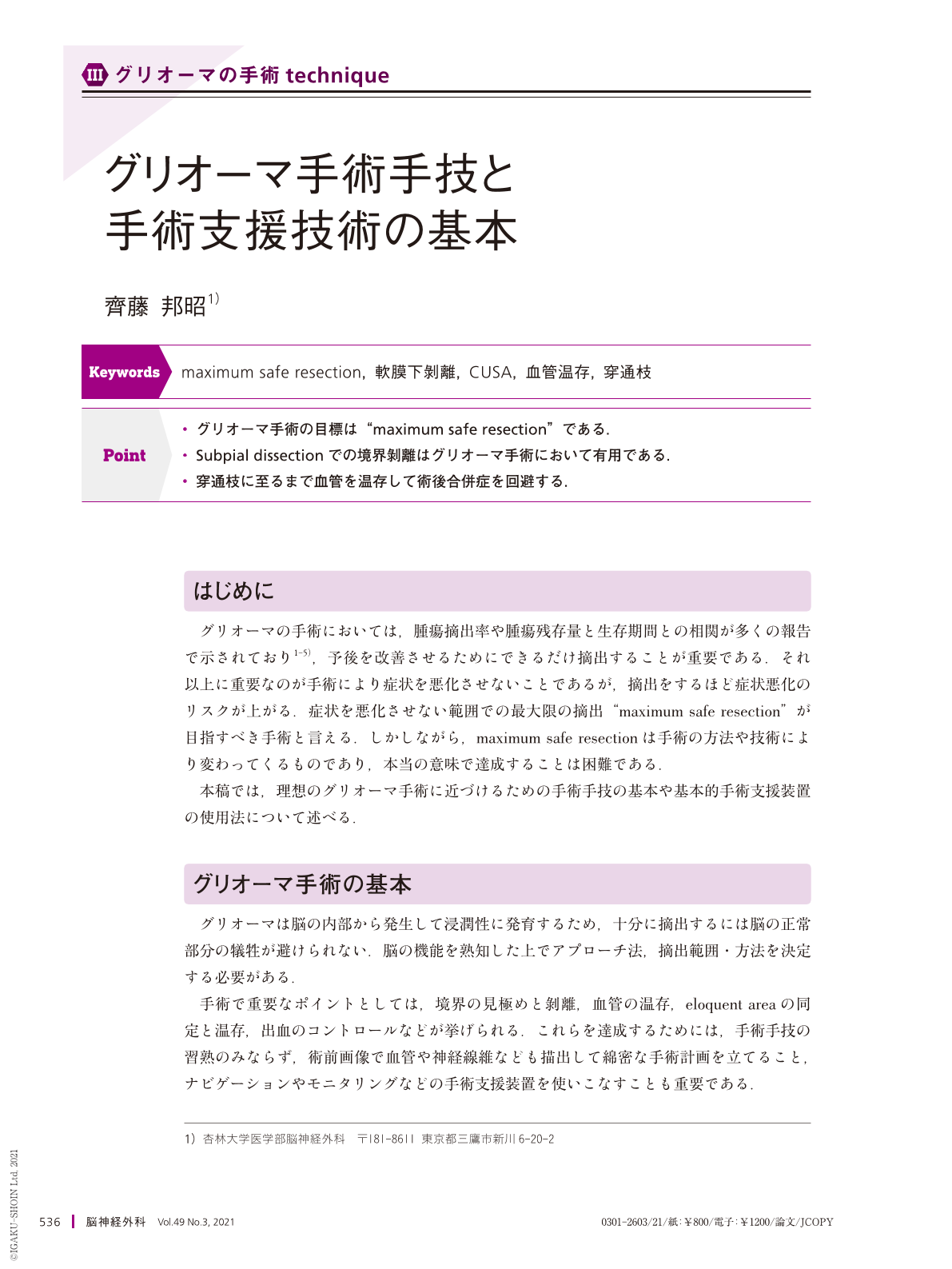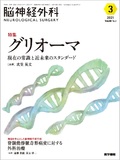Japanese
English
- 有料閲覧
- Abstract 文献概要
- 1ページ目 Look Inside
- 参考文献 Reference
Point
・グリオーマ手術の目標は“maximum safe resection”である.
・Subpial dissectionでの境界剝離はグリオーマ手術において有用である.
・穿通枝に至るまで血管を温存して術後合併症を回避する.
Maximum safe resection is the principal goal of glioma surgery to improve patient prognosis, and various skills and techniques are available to achieve this. First, detailed preoperative image assessment of the tumor, arteries, veins, and white matter is helpful in developing the surgical plan. Second, surgical supporting technology, such as a navigation system, electrophysiological monitoring, awake craniotomy, and fluorescence-guided surgery, are vital for glioma surgery. Third, and most importantly, neurosurgeons should develop surgical techniques. In this review, we will focus on the following points: how to determine and dissect the tumor boundary, how to preserve passing arteries and veins, how to identify and preserve the eloquent cortex and fibers, and how to treat bleeding during tumor removal. Dissection of the tumor margin includes sharp dissection and subpial dissection. Subpial dissection using a suction tube or Cavitron Ultrasonic Surgical Aspirator(CUSA)is often effective in glioma surgery, not only for achieving better resection, but also for the preservation of passing vessels. Using these techniques, excessively small vessels, such as perforating arteries, can be finely exposed and preserved during tumor resection. In this way, we should achieve an ideal balance between maximum tumor resection and patient quality of life.

Copyright © 2021, Igaku-Shoin Ltd. All rights reserved.


